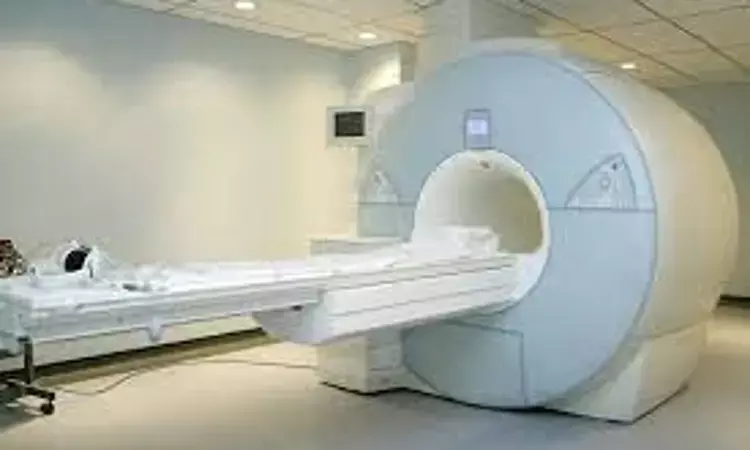- Home
- Medical news & Guidelines
- Anesthesiology
- Cardiology and CTVS
- Critical Care
- Dentistry
- Dermatology
- Diabetes and Endocrinology
- ENT
- Gastroenterology
- Medicine
- Nephrology
- Neurology
- Obstretics-Gynaecology
- Oncology
- Ophthalmology
- Orthopaedics
- Pediatrics-Neonatology
- Psychiatry
- Pulmonology
- Radiology
- Surgery
- Urology
- Laboratory Medicine
- Diet
- Nursing
- Paramedical
- Physiotherapy
- Health news
- Fact Check
- Bone Health Fact Check
- Brain Health Fact Check
- Cancer Related Fact Check
- Child Care Fact Check
- Dental and oral health fact check
- Diabetes and metabolic health fact check
- Diet and Nutrition Fact Check
- Eye and ENT Care Fact Check
- Fitness fact check
- Gut health fact check
- Heart health fact check
- Kidney health fact check
- Medical education fact check
- Men's health fact check
- Respiratory fact check
- Skin and hair care fact check
- Vaccine and Immunization fact check
- Women's health fact check
- AYUSH
- State News
- Andaman and Nicobar Islands
- Andhra Pradesh
- Arunachal Pradesh
- Assam
- Bihar
- Chandigarh
- Chattisgarh
- Dadra and Nagar Haveli
- Daman and Diu
- Delhi
- Goa
- Gujarat
- Haryana
- Himachal Pradesh
- Jammu & Kashmir
- Jharkhand
- Karnataka
- Kerala
- Ladakh
- Lakshadweep
- Madhya Pradesh
- Maharashtra
- Manipur
- Meghalaya
- Mizoram
- Nagaland
- Odisha
- Puducherry
- Punjab
- Rajasthan
- Sikkim
- Tamil Nadu
- Telangana
- Tripura
- Uttar Pradesh
- Uttrakhand
- West Bengal
- Medical Education
- Industry
DLR applied to 1.5T MRI for lumbar spine imaging time saving and may provide better image quality

Although many authors have investigated the role of AI (Artificial intelligence) application on lumbar spine in different fields such as pathology detection and reporting; the role of AI algorithm on whole routinely MRI lumbar spine protocol acquisition has not been investigated yet.
Marta Zerunian et al conducted a study to prospectively compare quantitative and subjective image quality, scanning time, and diagnostic confidence between a new deep learning-based reconstruction (DLR) algorithm and standard MRI protocol of lumbar spine. The study has been published in “Skeletal radiology” journal.
Eighty healthy volunteers underwent 1.5T MRI examination of lumbar spine. Protocol acquisition comprised sagittal T1- and T2-weighted fast spin echo and short-tau inversion recovery images and axial multislices T2-weighted fast spin echo images. All sequences were acquired with both DLR algorithm and standard protocols. Two radiologists, blinded to the reconstruction technique, performed quantitative and qualitative image quality analysis in consensus reading; diagnostic confidence was also assessed. Quantitative image quality analysis was assessed by calculating signal-to-noise ratio (SNR) and contrast-to-noise ratio (CNR). Qualitative image quality analysis and diagnostic confidence were assessed with a five-point Likert scale. Scanning times were also compared.
Key findings of the study were:
• DLR SNR was higher in all sequences (all p< 0.001).
• CNR of the DLR was superior to conventional dataset only for axial and sagittal T2-weighted fast spin echo images (p < 0.001).
• Qualitative analysis showed DLR had higher overall quality in all sequences (all p< 0.001), with an inter-rater agreement of 0.83 (0.78–0.86).
• DLR total protocol scanning time was lower compared to standard protocol (6:26 vs 12:59 min, p < 0.001).
• Diagnostic confidence for DLR algorithm was not inferior to standard protocol.
The authors concluded that – “DLR applied to 1.5T MRI is a feasible method for lumbar spine imaging providing morphologic sequences with higher image quality and similar diagnostic confidence compared with standard protocol, enabling a remarkable time saving (up to 50%).”
Further reading:
Fast high quality MRI protocol of the lumbar spine with deep learning based algorithm: an image quality and scanning time comparison with standard protocol
Marta Zerunian, Francesco Pucciarelli et al
Skeletal Radiology (2024) 53:151–159
https://doi.org/10.1007/s00256-023-04390-9
MBBS, Dip. Ortho, DNB ortho, MNAMS
Dr Supreeth D R (MBBS, Dip. Ortho, DNB ortho, MNAMS) is a practicing orthopedician with interest in medical research and publishing articles. He completed MBBS from mysore medical college, dip ortho from Trivandrum medical college and sec. DNB from Manipal Hospital, Bengaluru. He has expirence of 7years in the field of orthopedics. He has presented scientific papers & posters in various state, national and international conferences. His interest in writing articles lead the way to join medical dialogues. He can be contacted at editorial@medicaldialogues.in.
Dr Kamal Kant Kohli-MBBS, DTCD- a chest specialist with more than 30 years of practice and a flair for writing clinical articles, Dr Kamal Kant Kohli joined Medical Dialogues as a Chief Editor of Medical News. Besides writing articles, as an editor, he proofreads and verifies all the medical content published on Medical Dialogues including those coming from journals, studies,medical conferences,guidelines etc. Email: drkohli@medicaldialogues.in. Contact no. 011-43720751


